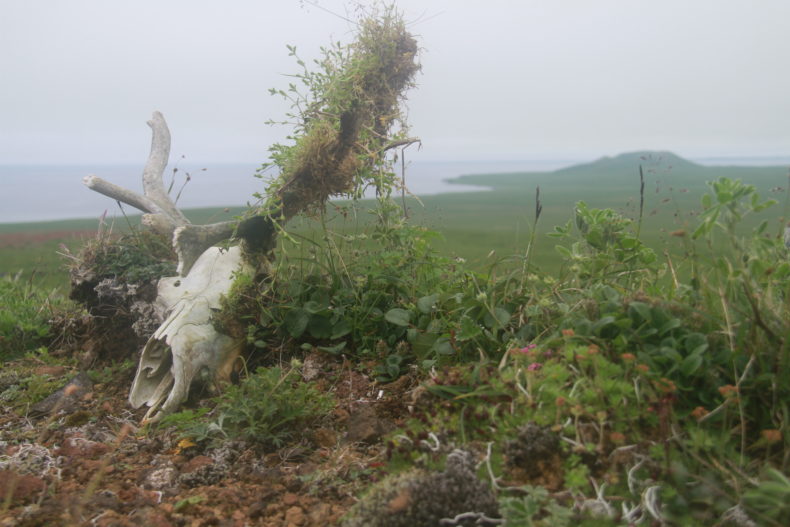
The marmoset looked unlikely on the filing cabinet. It reclined on a piece of poster board, its skinny arms folded across its chest. Its cotton-stuffed eyes stared at the low, tiled ceiling. The specimen room smelled strongly of tea and cornmeal.
Carina pulled the handle of a taller cabinet, and Mo and I leaned in. The three of us—college student, photographer, and writer—had other things we were supposed to be doing. But here, behind the door, there were rows of enticing labeled drawers. Each cabinet, a family—the corvids, the alcids, the procellariids. Each drawer, full of birds. We lifted the owls, the nighthawks, the warblers. We tested their weight. They were light as paper in our hands. I noted the way their feathers layered over one another into soft curves and colors, like summer clouds. The way they gave under the press of fingertips. We moved from family to family, touching clawed feet and folded wings. We exclaimed over this great collection of the dead the way others might coo over kittens. My people, I thought, looking at the other women.
I’m not sure exactly when this started. Maybe it was with my parents, who led my two sisters, my brother, and I on foot over the High Plains looking for fossils from vanished seas on family vacations. Or maybe it was my friend Siona’s mom, who took us out searching the hills near her house for animal skeletons when we were teenagers. Whatever it was, for a long time, I have recognized kindred spirits by their fascination with dead stuff.
Siona used to cut the feet from road-killed birds and wear them as witchy earrings, the little curled toes scratching against her neck. I loved her for this, among other things. When I was 15, my oldest sister Amy took me to the Georgia O’Keeffe museum in Santa Fe, where I stood before the painter’s giant oils of skulls and pelvises superimposed on desert buttes. Through her eyes, I saw that body and landscape could be one thing. In college, my fellow art majors began bringing me dead birds, thinking I might find use for their feathers. A painter named Erin drove a two-weeks-gone wild turkey all the way across Idaho and part of Washington in the high heat of summer. By the time she delivered it, the garbage bag that wrapped it had swollen like a balloon. I tried to retrieve the skeleton of a dead dove I found by cutting away the muscle and boiling the bones to clean them, but gave up when the pot began to smell nauseatingly like chicken soup.
A few years ago, I watched hundreds of people make the pilgrimage to see a dead blue whale that had washed up on an Oregon beach. I watched them touch its rotting skin with awe. Not long after, I watched people count dead salmon along a creek with reverence, the fishes’ flesh patchy white, their eyes gone, the smell ungodly, drawing us all further into deep island woods, poking, looking, turning with sticks.
I’ve sometimes thought that this kind of behavior is purely morbid. In my world, human death is abstract and almost completely invisible. I have grieved across the spaces loved ones have left, but have not interacted with their physical bodies. In this absence, you get curious about the dead.
But today, watching a turkey vulture lift off a deer carcass and careen about in the wind, it was the nearness of life I felt, not death. A wondering at the curves, cups, shafts, and knobs of the scaffold that allows us to stand and walk and dance. That gives our flesh form. That we share these basic shapes with other wild things. That these shapes deliver the flight of crows and the swim of fish, the speed of antelope and the slap of beaver. That they permit the stretch of fingers and toes in the morning, the delicious waking and lengthening, the texture of sheets and threadbare rug, the grain of wooden table.
That sensation exists at all. That we are given, as houses for these drift-accumulations of feeling, our bodies. That we may throw their windows open to receive the wind and light. That they will fall to ruin around us.
If even for a short while, that this is enough.